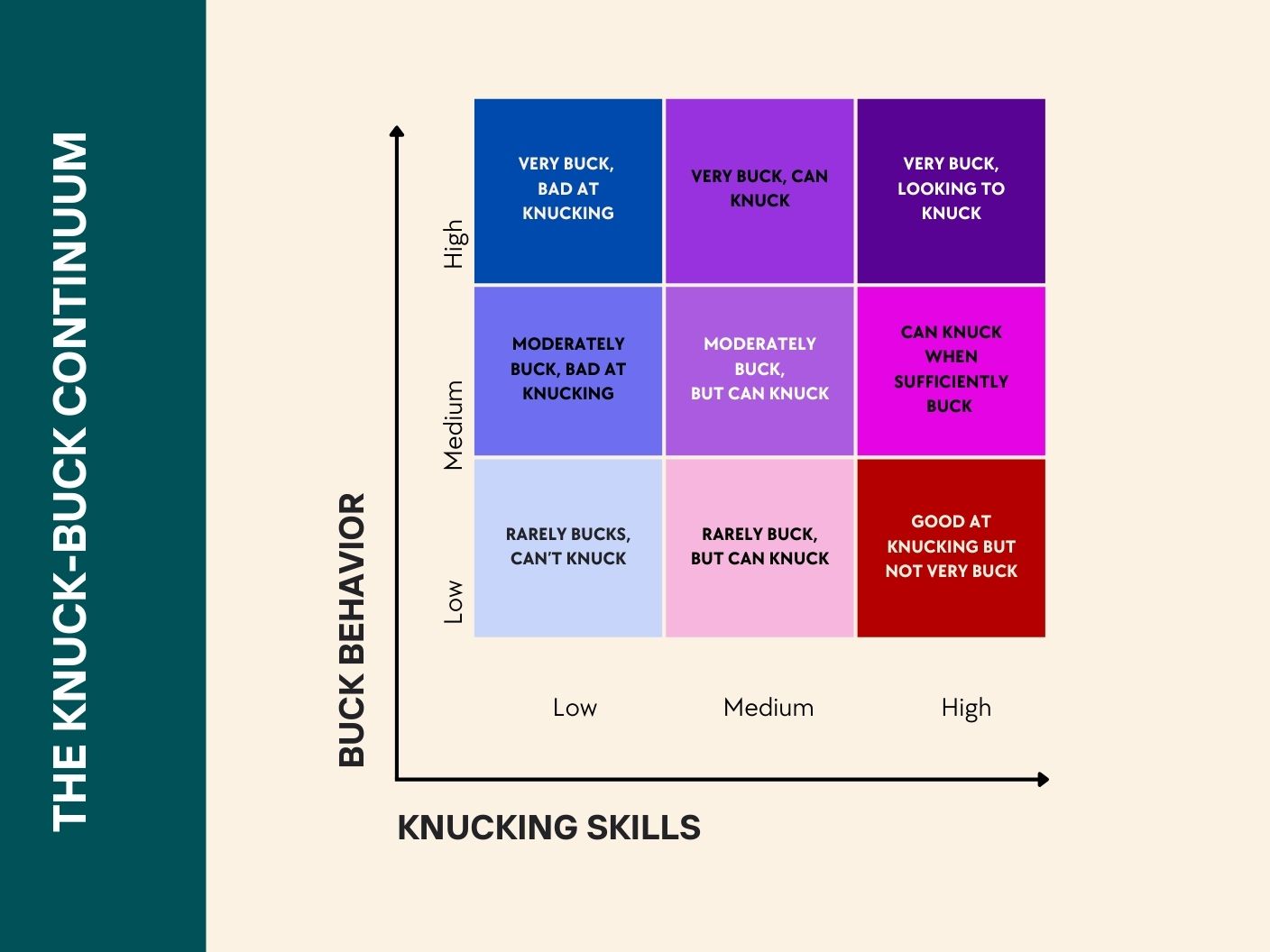Are you buck enough to knuck?
OPINION: TheGrio’s Black Music Month “Ever Wonder” series investigates Black music’s most iconic songs. Today we celebrate the 20th anniversary of a Southern anthem.

Editor’s note: The following article is an op-ed, and the views expressed are the author’s own. Read more opinions on theGrio.
Twenty years ago, an Atlanta poetry collective released a platinum-selling hit song that would come to define the spirit of Black resistance, youthful exuberance and, most of all, the specific mentality necessary for mutual combat.
They called it “Knuck if You Buck.”
Released on June 29, 2004, “Knuck if You Buck” is not just a song; it is an anthem. It is also an instructional video and a barometer for people who want “that smoke.” In three minutes and 28 seconds, Crime Mob and Lil Scrappy set the “f*ck around” parameters for anyone interested in “finding out.” While it has become a rallying cry to ne’er-do-wells and a signal to others that it’s time to leave the club, the literal “slam poem” is much more than an incitement to riot.
For Black Music Month, theGrio wanted to explore, explain and dissect the scientific principles surrounding this melee lullaby. Is buckness required or is it simply recommended? Should potential knuckers use a cumulative scale or a knuck-to-buck ratio? Most importantly, why would anyone endeavor to knuck in the first place?
Thankfully, we have the answers.
What is knucking?
“Knucking” is not just a synonym for fighting; it is a movement.
There has always been a punk rock-inspired moshing movement in underground hip-hop. During hip-hop’s golden era, parties would erupt in raucous exultation when DJs played House of Pain’s “Jump Around,” Onyx’s “Slam” or Mash Out Posse’s “Ante Up.” But the Dirty South took this trend to another level.
During the early 2000s, “Headbussa rap” emerged as its own Southern rap gene. Partygoers in the Deep South were “throwin’ bows” long before Ludacris released “Southern Hospitality.” Songs like Bone Crusher’s “Never Scared,” Lil Scrappy’s Headbussas, Pastor Troy’s “No Mo Play in G.A., and — perhaps the most famous of all, Three Six Mafia’s “Tear da Club Up” were not just underground club hits, they were mainstream Southern staples.
While non-Southerners often conflate the knucking movement with the “crunk music,” the two are not the same. In fact, one could say that knucking is just a form of male twerking. Just as the 69 Boyz inspired tennis skirt-clad booty-shakers to upgrade from the Butterfly to the “Tootsee Roll,” the opening of Master P’s “Hot Boys & Girls” was all that was needed to transform a dance floor into a Black mosh pit filled with young Black men in oversized T-shirts.
Recommended Stories
In fact, brain scans showed Three 6 Mafia’s “Hit a MF” activated the same areas of men’s cerebellum as women who listened to “Scrub Da Ground.” However, according to the BUCK Project’s dedicated Team for Weaponized Elbows, Rhythmic Knuckle Throwing and Exuberant Ass Movement (TWERKTEAM) people who are diagnosed with BUCK Syndrome are different.
Yes, buckness is a medical diagnosis.
Buck, explained.
To properly understand the two different interpretations of the term “buck,” one must first know the etymological and the grammatical origins of the phrase.
As an adjective, the scientific term describes an unapologetic lack of concern for the negative repercussions of one’s own actions. While many people mistakenly assume the word “buck” is a shortened version of “buckwild,” it is actually a portmanteau of the phrase “bereft of f*cks,” according to the Black Literary Almanac of Communication, Knowledge, Slang, Patois, Euphemisms and Conversational Homilies (BLACKSPEAK).
Until recently, African Americans attributed buckedness to a lack of home training or not being raised right. However, scientists recently isolated the gene responsible for this behavior. Their studies show that Juvenile Buckness Syndrome is responsible for 72.8% of sniggling, giggling, hooping, hollering and, in extreme cases, the conduct described as “acting a damn fool.”
As a verb, the term describes the actions of highly buck individuals. While most people are willing to comply with requests to “don’t start none,” people who suffer from Adult Onset Buckness are unconcerned about creating an environment where “there won’t be none.” They are willing to fight for the most innocuous action. They “get buck” at someone for being disrespectful” or “buck up” at someone for “acting funny.” In the most extreme cases, a buck person may get buck by bucking off a few shots at buck-deficient busters.
Symptoms of Buckness
We are proud to announce that a buck vaccine is in the early stages of development. But until the FDA approves the “buccine,” the Buckology Research University of the Hood (BRUH) has identified four distinct symptoms of people who suffer from Adult Onset Buckness:
- Brazen: Outbursts of buckness are impossible to predict but, for some reason, people who commit acts of bucketry must brazenly announce their hometown. They can’t help it. To be fair, people who yell “Brooklyn!” are always in the house and Crime Mob repeatedly mentions Ellenwood, Ga. However, our data shows that people from Duval County, Fla., are three times more likely to participate in an act of buckitry. (Look, I’m just telling you what BRUH told me.)
- Unruly: Buck children may be addicted to walking in and out that door and often speak when grown folks are talking. But among adults, almost all buck behavior is “thang” related. They are more than willing to “throw them thangs” while “gettin’ cruck off in the thang.” Generally, you should remove yourself from the premises when someone says: “Don’t be here when I get back.” Buck people never say this. They “keep that thang on them.
- Crazy: In interviews, subjects often compared themselves to Saddam Hussein, Hitler, and even Osama Bin Laden. More importantly, they often convince themselves that they are surrounded by unseen enemies who are out to get them. BRUH says 37.4% of bucksters directed their knucking at their “opps.” Another 22.6% was aimed at “haters” who can’t stand to see them shine. A smaller percentage was due to others’ inability to keep a buck person’s name out of their mouth.
- Knucklehead: A boneheaded “gat-totin’, pistol-holdin’ n***a on yo damn street” may simply be exercising their Second Amendment rights, but if someone is “stompin’, jumpin’, bumpin’” or being “ready to fight,” they might be buck-adjacent. Not everyone who exhibits this behavior is a carrier of the buck gene. But if you hear someone yell “Duuuuuuvaaaaal!” while opening their trunk; get the hell up outta there. It’s about to get buck.
Left untreated, a person suffering from Adult Onset Buck Disorder may exhibit some of the symptoms described by Crime Mob, including gat totin’, pistol holdin’, shaking dreads and the desire to go “upside someone’s head”– all of which fall under the category of bucking. If this sounds like someone you know, trust me, you’re wrong. Aside from the acronym, you may recognize the universal Buck war cry:
“You don’t know me!”
“DUUUUUUVALLLLL!”
The Knuck-Buck Continuum
Now that you understand the basics of knucking and bucking, it is also important to understand the relationship between the two.
In the past, some mathematicians incorrectly expressed Crime Mob’s premise as: If U=buck → U=knuck. But newer generations soon realized that knucking and bucking are two separate and distinct activities. According to the principles of Knuckonomics, a person’s level of buckness is not necessarily related to their decision to knuck. As our completely scientific chart illustrates, knucking and bucking are two separate and distinct activities.

As you can see, not only is buckness not a necessary element of knucking, it is quite possible that someone can display high levels of buckness while never knucking.
One of the most recent examples of this phenomenon is the Kendrick Lamar beef. Initially, Drake was extremely buck but eventually proved to not be sufficiently skilled at knucking. Kendrick Lamar, on the other hand, was not outwardly buck but, when pushed, showed world-class knucking ability. While the Black people on the infamous Montgomery Riverboat possessed high levels of buckness and knuckability, the white combatants were simply just buck.
Perhaps the most famous knucking versus bucking occurred On July 9, 1919, when rumors spread in Coatesville, Penn., that a white mob was preparing to lynch a falsely accused Black man. Recalling how a 5,000-man white mob lynched Zacaharia Walker a few years earlier, Coatesville’s Black residents grabbed their guns, bats and ax handles and marched to the city jail. Presented with the choice of effing around or finding out, Coatesville’s white citizens proved they were buck, but they were not ready to knuck.
Nearly 125 years later, not one Black man has been lynched in the state of Pennsylvania.
Now that is a “crime mob.”

Michael Harriot is a writer, cultural critic and championship-level Spades player. His NY Times bestseller Black AF History: The Unwhitewashed Story of America is available in bookstores everywhere.
More About:Music Entertainment









